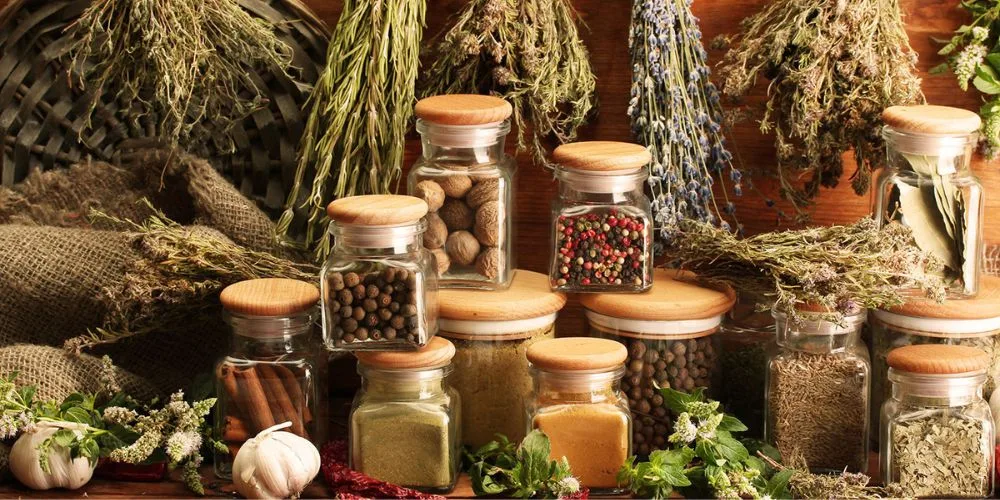Table of Contents
ToggleThe History of Kerala Spices
Spices capture the flavor of God’s nation. Spices including pepper, vanilla, cardamom, clove, cinnamon, nutmeg, ginger, and turmeric are all grown in Kerala. The flavor of spices remains on the tongue and in mind for a very long time. Culturing spices in Kerala is aided by central Kerala’s warm, humid environment, the foggy hill stations with their loamy soil rich in organic matter, and good rainfall. Regardless of ethnic, religious, and other variations, spices play a crucial role in giving Keralite cuisine its distinct flavor.
Kerala’s spices have a long history that dates back thousands of years. Due to its monopoly on spices, Kerala attained global recognition in ancient times due to the wealth brought into the state. Almost eons ago, Musiri, an old port in Kerala, became the center of the global spice trade. Some claim that the colonization of India by the West was an effort to seize control of the state’s spice trade. This outcome was Vasco Da Gama’s entry into India and the spice trade there.

The History of Kerala Spices
Spices fashioned Kerala’s affair with fate. The scent of spices was what first piqued the explorers’ interest. Countless people risked their lives to explore this area for its untold riches. Since the third millennium BCE, Kerala has traded spices with the rest of the globe. Arabs, Chinese, and European nations, including the Portuguese, French, and British, made their way to Kerala’s Malabar Coast. The most prized and trafficked item was now Kerala spices.
India gradually realized that it could produce more high-quality spices than any other country in the world after the colonization battles were over. Kerala was quickly becoming the world’s largest spice hub. It promptly learned about Muziris Spice Hub, its spice hub. Floods and earthquakes, however, soon ruined the Muziris hub in 1341. But Kerala didn’t give up; they preserved the Kerala spices and kept up The Muziris Heritage Project, the biggest heritage project to have taken place in India. To educate the people of Kerala and others about the Kerala spices and spice legacy, it has close to 21 museums.
Origins of Kerala Spices
The spice jars that fill our kitchens constantly remind us how much the trade in spices has altered human history. The Muziris port in Kerala, southwest India, had become a significant hub for the Kerala spices business as early as 3000 BC. All the explorers and hopeful spice traders were traveling to Kerala, India’s spice garden and they possessed the power to make or break civilizations. When Vasco da Gama arrived in Calicut in 1498, the dominance of the Arabs as the primary spice traders were challenged, and the spice trade shifted in Europe’s favor. The spice trade in the Indonesian islands also caused conflict between expanding European states.
By the start of the 1800s, individuals had learned how to transplant spice plants, shipped spice trees worldwide, and established trading routes and stations across the globe. Spices lost value as monopolies broke down and became more widely available. Kerala is still known as the famous origin of spices, nevertheless. Due to their beautiful aroma, texture, and medicinal value, Indian spices are still sought globally. Kerala spices are often farmed on modest plots of land, though organic farming has recently gained popularity. With 75 of the 109 kinds recognized by the International Organization for Standardization (ISO), India remains the world’s most significant producer, consumer, and exporter of spices. It also controls half of the world’s spice trade.
Spice Trade in Kerala
Some elements jeopardized India’s dominant position, including shifting global demand, competition from Southeast Asian markets, and the entry of nations from Latin America and Africa. The Spices Board was established to develop and promote Kerala spices globally and has implemented several programs to improve quality and grading processes, processing methods, and storage facilities. The mission of the Indian Institute of Spices Research, established in 1995, is to provide services and technologies to preserve species’ genetic resources as well as soil, water, and air of spices. The Indian spice trade, which has grown at an average rate of 8.8% annually between 2009–10 and 2014–15, is still doing well despite these efforts. Even some Indian spice sellers reported a 30% increase in exports in 2015.
Reducing the export rejection rate to zero over the next two years is a different goal shared by the Spices Board and Indian spice traders. Currently, samples are frequently transferred to labs abroad, where the outcomes are compared to testing in India. In such a situation, Kerala spices traders can use certification systems to verify that contamination doesn’t happen anywhere along the value chain. If these efforts are combined, Kerala may continue to dominate the global spice market.
Traditional uses of Kerala Spices
The history of Kerala spices that have been grown in India is extensive. The history of Kerala spices dates back thousands of years, and Kerala also makes up the majority of India’s spice exports. Kerala has demonstrated its domination over herbs and highlighted the abundance of spices available in its latitude. It is located in the southwest of India and offers various vegetarian and non-vegetarian dishes.
Pepper is referred to as the “lord of spices.” Pepper earned the “king of spices” moniker thanks to its widespread use, flavorful richness, and therapeutic properties. The pepper grown in Kerala is sometimes cited as the cause of the colonial conflicts. Hence, the introduction of pepper signaled a turning point in India’s history of spices.
Another widely used spice that is primarily grown in Kerala is clove. Cloves produce a variety of oils that are typically added to all meat recipes to enhance the flavor further. In addition to its usage in food, it is frequently utilized to maintain tooth health. Due to their therapeutic properties, cloves are commonly used in toothpaste, soap, and perfumes.
Cardamom’s scent and flavor differ significantly from other spices, so the demand for cardamom has risen. Because of its widespread use, Europeans have begun to cultivate and utilize it locally. Turmeric offers a wide range of health advantages, just like other spices. Blood pressure reduction and anti-inflammatory properties protect against chronic diseases, among other health advantages. It can occasionally aid in healthy digestion and the treatment of stomach ulcers.
The popularity of ginger around the world can be attributed to its adaptability. Kerala is renowned for producing ginger of the highest caliber. In addition to enhancing the flavor of food, ginger provides many health advantages. It contains many substances that help keep the body’s metabolism functioning properly.
Conclusion
Have you ever wondered if the Kerala spices you use to season food have any health advantages? The spices have consistently provided proof that the answer is yes, proving it everywhere. Every herb has a specific application in Ayurveda, such as treating the common cold, cough, or flu. Certain spices aid in digestion and can help avoid stomach ulcers. Moreover, several spices support a more robust immune system. Your household medicines are therefore available in compact containers when you have herbs.
Tracing back the history of Kerala spices will give you a clear picture of how the spices are originated, collected, preserved, and sold in Kerala. To get the best quality Kerala spices, visit the Kerala spices online website now and get the top ones! We ensure the quality of each spice that you receive through our website. Contact us now!


